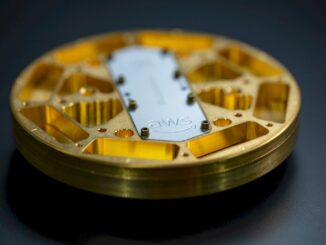
It is a good time to be the maker of a machine that excels in large-scale optimization problems for cybersecurity and defense. And it is even better to be the only maker of such a machine at a time when the need for a post-Moore’s Law system is in high demand.
We have already described the U.S. Department of Energy’s drive to place a novel architecture at the heart of one of the future exascale supercomputers, and we have also explored the range of options that might fall under that novel processing umbrella. From neuromorphic chips, deep learning PIM-based architectures, ultra-hybrid machines with a combination of FPGA, GPU and non-X86 elements, and of course, quantum computers, there are a rich set of options. While these are important possibilities for the world’s top supercomputing sites, the defense and intelligence space is watching keenly as well—and with an eye on systems that can target their exact workloads.
There are, however, three problems with all of the above, whether for supercomputing or defense and intelligence. First, there are very few system-scale products to tie to those research architectures (with the exception of D-Wave, maker of the first commercial quantum computers) and even if there were more developed efforts, getting the DOE to invest in a many-millions machine that doesn’t have a stable company behind it is very risky. Second, for all the architectures listed (and many more) there are no general purpose application sets—in other words, most novel architectures that have any traction are very good at solving one specific type of problem (neural networks, vast optimization problems, etc.). Third, and somewhat connected, is that mapping problems onto any of these architectures is a steep uphill climb. For some devices, using higher level interfaces is on the horizon, but for others, especially quantum machines, programming takes some serious muscle.
In a conversation with D-Wave’s Bo Ewald this week, it was made clear that quantum computers will operate in more of a hybrid or offload/acceleration model for parts of workloads running at large-scale supercomputing sites. But for those few areas where software development has been ongoing and custom applications for actual D-Wave machines have been created, the true opportunity for this novel approach to computing is clear. Google, NASA, Lockheed Martin, Los Alamos National Lab, and now today, Volkwagen, have all focused on developing their own applications and software tools. Those efforts are getting a fresh boost this month with the addition of Virginia Tech and the D.C. and Virginia Tech-based cybersecurity-focused Hume Center as software R&D partners for D-Wave quantum machines.
Virginia Tech researchers are working on next-generation tools to fit the 4,000 qubit quantum systems D-Wave rolled out in January to help expand the application set and developer tools. Ewald tells us that developers there are using cloud-based access to the company’s own machine for research. As one might imagine given the location as well, Virginia Tech is a great choice of institutions for those hoping to put their quantum development skills to practice in the government—or via a government contractor like Temporal Defense Systems, a stealthy cybersecurity startup that just bought a $15 million 4,000 qubit machine from D-Wave.
Ewald says this is the first quantum system the company purchased, although he says they’ve been working together for the last three years. A look at their offering shows that this is software that was designed to run on a quantum computer versus any standard architecture. At the core of their cybersecurity approach is the Quantum Security Model, which “employs a new unit of measure, the qSec. The qSec quantifies the relative security health of any individual computing devices, any of its subcomponents, or an entire network.” The company also makes a device called the dPHY secure processor that can identify threat potential and enhances secure processing and storage for sensitive information. This is designed to snap into existing infrastructure. But most interesting are two new offerings, of which there is little known. First is the Quantum Energy Circuit (QEC) and second is “Temporal Shift Computing”. The company could not be reached for more information and will only discuss publicly available products but we will continue trying.
When it comes to understanding what a stealth government contracting company really does, one has to look no further than its technical leadership. The chief technology officer and head security strategist for Temporal Defense Systems is James Burrell, who was preciously a senior federal government executive in the position of FBI Deputy Assistant Director and was the FBI’s point person for the new National Strategic Computing Initiative, which focuses on exascale-era future machines. His experience includes serving as “lead investigator for complex, high-profile cyber, criminal, and national security investigations, to include attempted presidential assassination, assassination of federal officials, and kidnapping of the Special Counsel to the President.” The company’s Chief of Operations is Kristy Kottis, a 24-year FBI veteran that led the Threat Response Squad of the Joint Terrorism Task Force for six years in addition to focusing on securing major public events, and many of the company’s current and past technical and engineering employees also hail from the FBI or other large government contractors, including Raytheon, among others.
“The combined power of the TDS / D-Wave quantum cyber solution will revolutionize secure communications, protect against insider threats, and assist in the identification of cyber adversaries and attack patterns,” said James Burrell, TDS Chief Technology Officer and former FBI Deputy Assistant Director. “Combining the unique computational capabilities of a quantum computer with the most advanced cyber security technologies will deliver the highest level of security, focused on both prevention and attribution of cyber attacks.”
Temporal Defense Systems (TDS) was apparently expecting to do some serious business with its quantum machine when it tried unsuccessfully to secure a facility in Washington state but failed in 2014. The company tried to fly under the radar in stealth mode as an unnamed “government contractor” and was denied the ability to operate a facility that would have required a $40 million upgrade to the facility and room to house 300 employees. The main offices are now in Kirkland, Washington with satellites in DC, New York, and FBI hotspot, McLean, Virginia.
One can imagine that Temporal Defense Systems might have a clear inside edge with the FBI’s cybersecurity divisions, making a business like this valuable, indeed. It also worth noting that just as Virginia Tech researchers are able to tap into D-Wave’s cloud-based quantum computer, so too can others who are developing new software platforms for quantum machines. If D-Wave had been working with TDS for a few years before the team bought the $15 million machine, they were likely developing on a remote platform. This means it is possible for other security agencies to make use of quantum computing technology without having to purchase a machine—at least not yet.
As noted above, the most compelling novel architectures in development now lack a general purpose application component. However, for all of those mentioned, there are high-value applications that can benefit—for instance, the new wave of deep learning chips can capture that growing market, just as quantum machines might carve out a very profitable niche in defense and intelligence above all others since the one thing they do best—solve ever-more complex optimization problems—is inherently aligned with many applications in cybersecurity, defense, and intelligence.
Ewald agrees that the heightened interest in cybersecurity and defense could spell big benefits for his company, which has a niche machine that can have a laser focus on these types of problems, but the budgets for the next two years are still forthcoming.
In terms of quantum computing for the coming year, the Volkswagen quantum computing story is interesting in that it shows an application with real-world, visible results, the truly unique, profitable, and interesting quantum computing stories will likely go untold.





Saying that Dwafe is a quantum computer is not correct. It is not an universal quantum computer. It just uses some quantum mechanics but it is not universal. One should be careful on that. Reseachers have demonstrated that existing machines can solve problems with the same complexity as the dwave machine. There is a long way to go for true universal quantum computation. IBM is doing some of the pioneering efforts.